How to judge the tea taste in the evaluation of coffee flavor and taste? The reason for the obvious astringency of coffee
Professional coffee knowledge exchange more coffee bean information please follow the coffee workshop (Wechat official account cafe_style)
For more boutique coffee beans, please add private Qianjie coffee on Wechat. WeChat account: qjcoffeex
In the coffee flavor wheel, we can hardly see a description of tea. Among them, "black tea" is also classified as the fragrance of flowers.
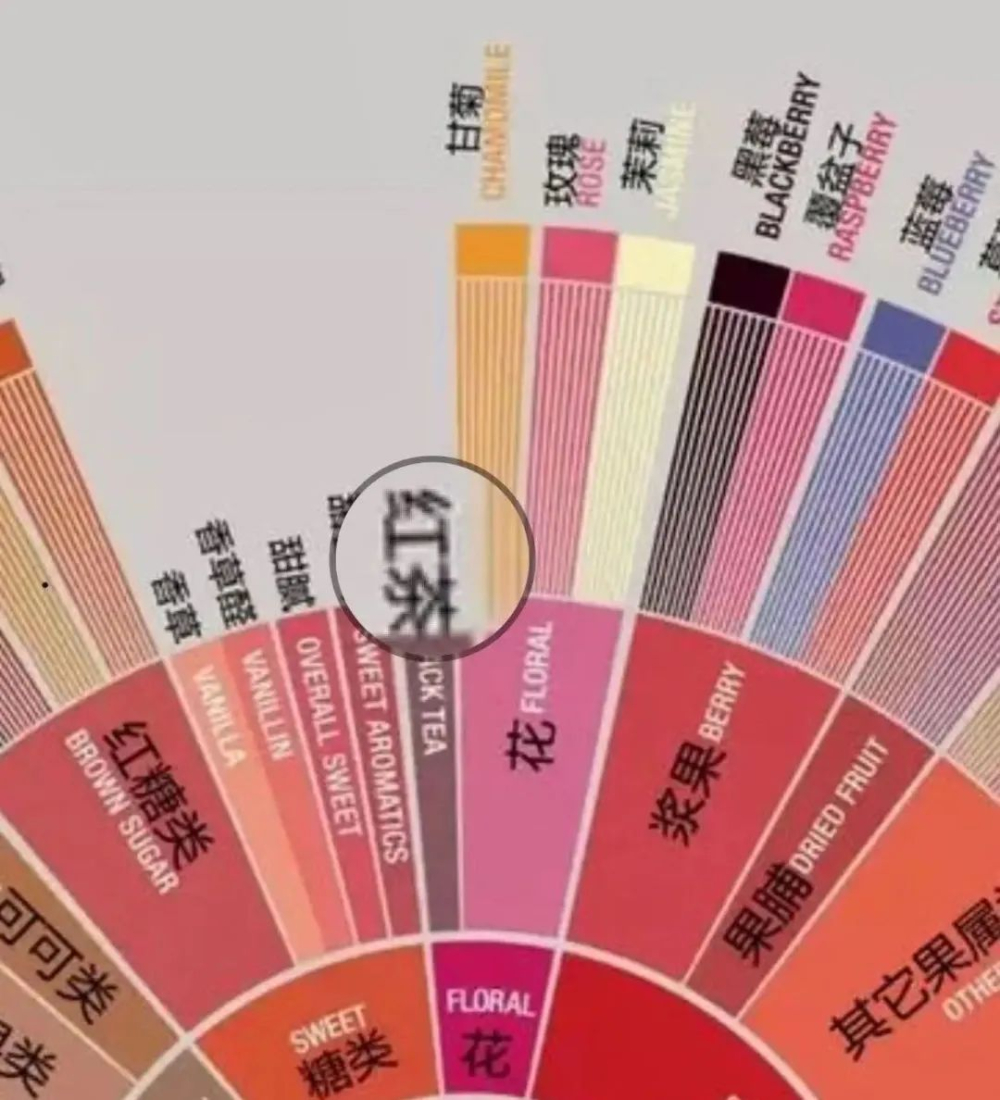
But in spite of this, we can often see the description of tea flavor in many coffee bean flavor descriptions sold in China, such as green tea, black tea, oolong tea. How to judge the flavor of these teas? Is astringency the feeling of tea?
What is tea feeling?
I believe you have tried to feel a slight rough feeling on the tongue when drinking tea (draw the key point, it is very slight ~ only there will be a slightly astringent feeling on the tongue), accompanied by a sweet feeling, and then drink a mouthful of water, water is also sweet taste ~
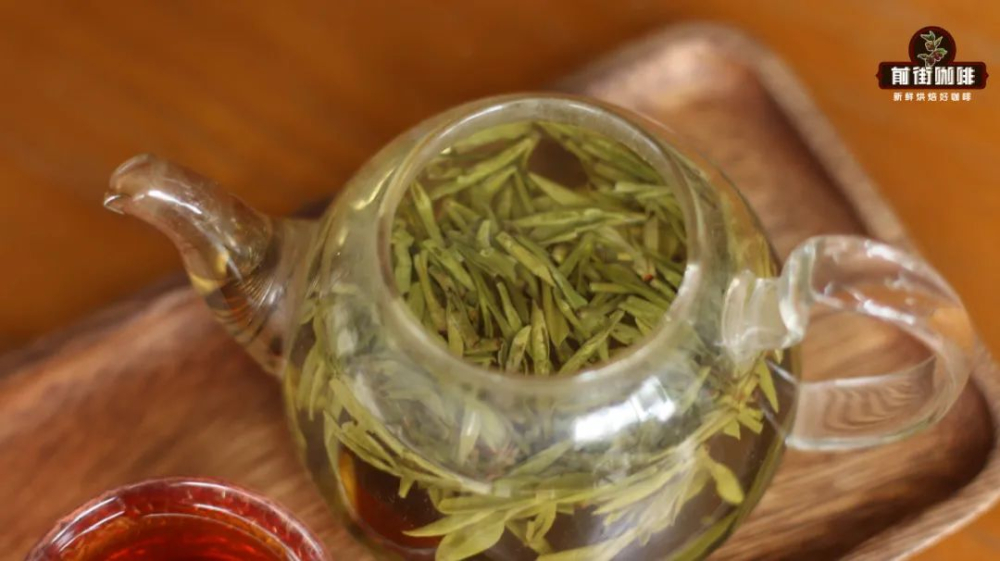
There is such a sweet feeling, mainly because the tea contains tea polyphenols and glycosides. The main function of tea polyphenols is to stimulate salivary glands to secrete saliva.
On the other hand, glycosides will be attached to the mouth during the process of drinking tea. After a while of hydrolysis, glucose will be produced, so you feel sweet, which is called Huigan. The more the content of hydrolyzed tannin in tea is (that is, the more energy material is retained), the stronger and lasting Huigan and Shengjin are.
Astringency & what's the difference between the rough feeling of the tongue when Shengjin returns to Gan?
Astringency belongs to oral touch. The appearance of "astringency" is that polyphenols in food show themselves in the mouth, giving the mouth a sense of roughness. Astringency is annoying, but we still need to divide astringency into two groups: positive astringency and negative astringency.
The positive astringency is the layering that enriches the coffee. For example, the slight astringency of the citrus peel, the clean acidity and the slight astringency of the peel remind us of eating the endocarp (the layer of the pulp) when eating grapefruit pulp, with a slightly bitter taste in sweet and sour, which is not objectionable and sweet.
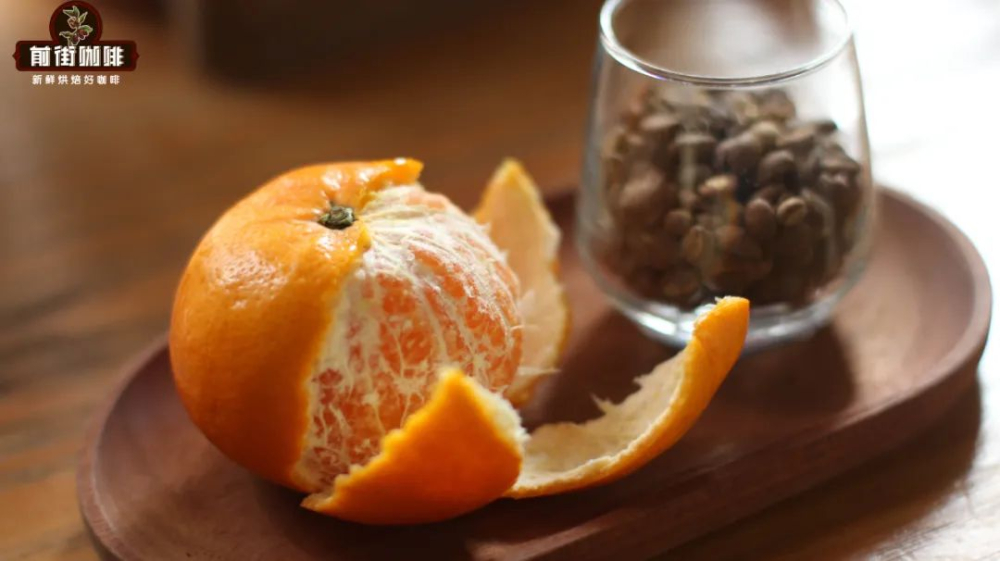
Negative astringency is irreversible. For example, the coffee variety itself has too much chlorogenic acid, which will be degraded into quinic acid during baking. Quinic acid is a phenolic acid and non-volatile, so it can not be smelled through the sense of smell, but it tastes bitter and has a strong sense of astringency.
For example, coffee beans are not completely dehydrated in the roasting process, and the moisture in raw beans will affect the heat transfer, so it is easy to appear that the beans are ripe, but the bean core is still unripe, so it tastes like herbs and has a green and stinging feeling.
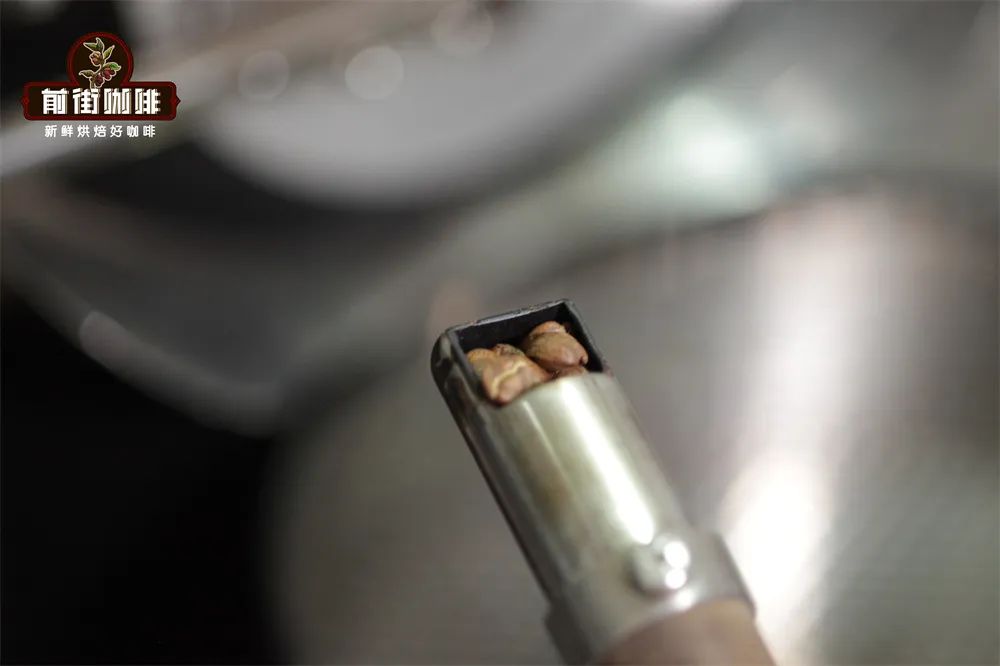
The positive astringency will only give the tongue a slight rough feeling, and at the same time, this feeling will quickly dissipate and be accompanied by the sweetness of sweet taste. On the other hand, the negative astringency will make the tongue dry / sour / bitter for a long time, and you can also feel the obvious roughness of the tongue after gargling with water.
Why is there a sense of tea in coffee?
There is another reason for the feeling of health and sweetness when drinking tea: the organic acids in tea (one of the main components of the aroma). Organic acids stimulate the secretion of salivary glands, resulting in the feeling of "Shengjin Huigan". If we eat green plum, red bayberry, plum and other fruits, the mouth is easy to produce body fluid.
Coffee itself is very rich in organic acids. The excellent acidity of coffee is formed by the transformation of various organic acids in raw coffee beans through baking, so the amount of organic acids in coffee beans also determines the acid performance of coffee.
In general, the lighter the baking, the more sour it will be, but not all sour tastes are positive. The altitude of planting and the fertility of the soil have a positive effect on the formation of organic matter in coffee beans.
For example, Kenyan coffee beans, grown at 1600 meters above sea level, can show bright and solid acidity when roasted into shallow roasting. But if the Brazilian coffee beans grown at an altitude of about 1000 meters are lightly roasted, they can only show hollow acidity and strong nutty flavor.

Usually only coffee beans grown at high altitude show a lively and bright sour taste when roasted in the right way. When these sour tastes are slightly astringent at the same time, and when combined with a certain aroma in the cup, people will think of the feeling of drinking tea and bring about the feeling of tea in coffee.
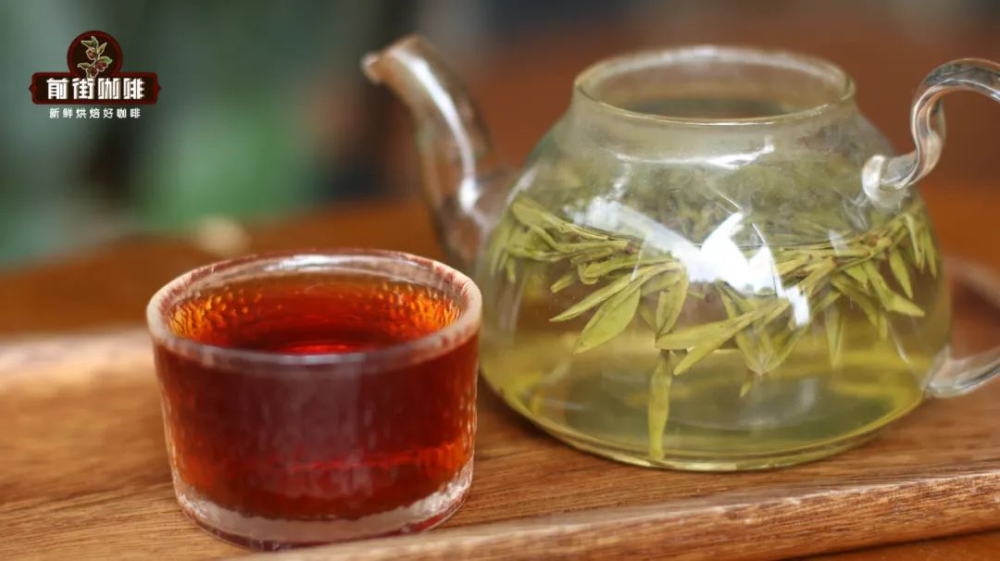
How many kinds of tea are there in the coffee?
Whether you can get a sense of tea in coffee depends on whether the coffee drinker is familiar with the aroma and taste of tea and the sense of sweetness it brings. Most Chinese people have certain impressions and memories of the feelings brought about by different kinds of tea, so when drinking coffee that will bring a slight roughness to the tongue, they will always think of a certain kind of tea.
For example, when we taste green tea, green tea itself retains a lot of tea polyphenols, so the mouth will feel rough (slightly astringent) and the aroma is fresh. At the same time, you will also feel the fishy smell of seaweed food, which is called purport taste (fresh taste, is the special taste brought by amino acids) ~

On the other hand, when tasting the washed Yejashafi coffee in Qianjie Street, you will often feel that the aftertaste of the coffee has the unique flavor of green tea or the fresh aroma of green tea itself.
For example, when tasting green tea (Oolong, Tieguanyin, etc.), because it belongs to semi-fermented tea, the tea is smooth, mellow and refreshing, the taste is obvious and the flavor is long-lasting.
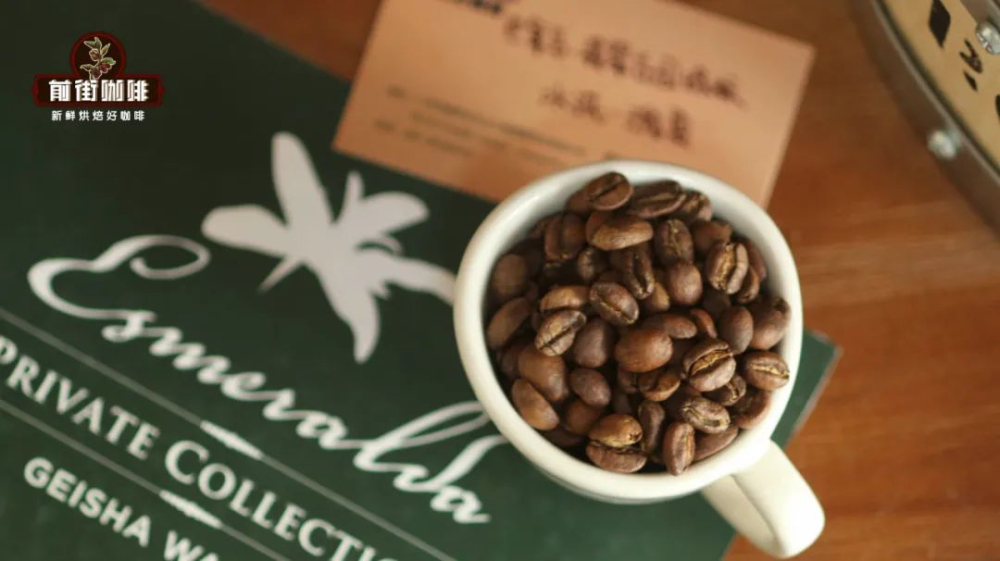
While Qianjie tastes the green label coffee of the jadeite manor treated with water, it will feel obviously sweet and light, just like drinking Tieguanyin tea, the aroma and taste are very long-lasting.
For example, when tasting black tea, because it belongs to fully fermented tea, the tea feels full and solid, the aroma is rich, and the taste of tea is mellow and sweet.
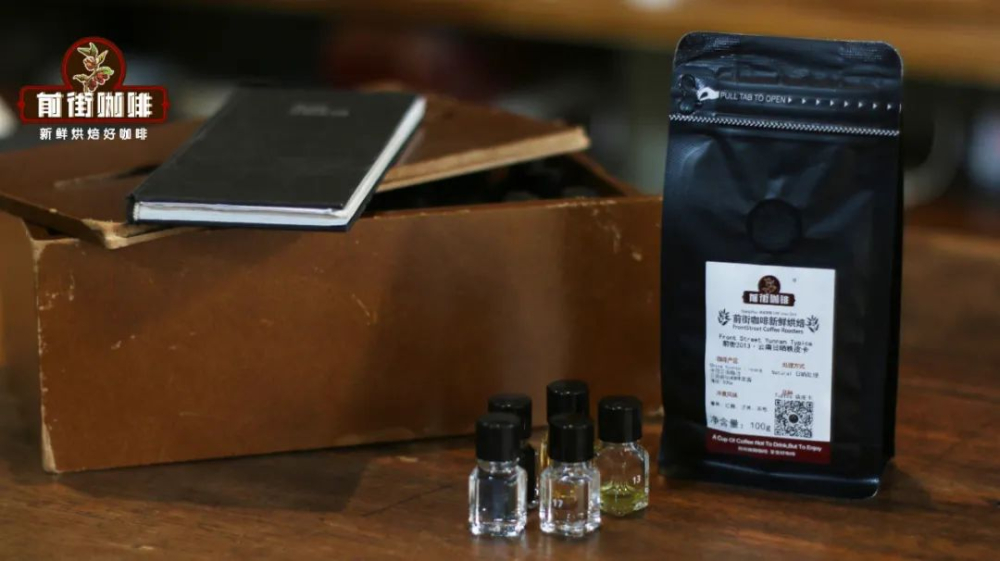
On the other hand, Qianjie will feel that Yuyun has a solid sense of sweetness when tasting Yunnan Sun Iron pickup Coffee grown at home, just like drinking black tea.
These different mouth touch and taste will remind Chinese people of different kinds of tea, so the description of tea taste / tea flavor / tea feeling often appears in the coffee beans bought in China.
Why is there only a description of "black tea" on the flavor wheel?
In the theory of flavor, many flavor references come from North America ~ there are few descriptions of tea in the description of the flavor of high-quality coffee beans abroad, because they do not have many definitions and concepts about the aroma of different kinds of tea and Shengjin Huigan. Therefore, even "black tea" is judged from the sense of smell and summarized to the category of flower fragrance.

On the other hand, coffee beans sold in China like to use tea / tea flavor as a flavor description, because Chinese people are "innate" familiar with tea taste. I also hope that through the description of the taste of tea, more people will slowly change the inherent impression that there is only bitter taste of coffee, and tell everyone that coffee can be like tea, with high-quality aroma, clean taste and pleasant taste.
Important Notice :
前街咖啡 FrontStreet Coffee has moved to new addredd:
FrontStreet Coffee Address: 315,Donghua East Road,GuangZhou
Tel:020 38364473
- Prev

Move forward steadily?! Starbucks Coffee double increase in revenue and net profit in the second quarter of 2023
Professional coffee knowledge exchange more coffee bean information please follow the coffee workshop (Wechat official account cafe_style) more boutique coffee beans please add private Wechat Qianjie Coffee, WeChat: qjcoffeex Starbucks is further from its strategic vision of China 2025! May 3, Lian
- Next

Luckin Coffee works with the five-man band "Jane falls in love with Ah Qiang"! Return to the green latte!
Professional coffee knowledge exchange more coffee bean information please follow the coffee workshop (Wechat official account cafe_style) more boutique coffee beans please add private Wechat Qianjie Coffee, WeChat: qjcoffeex yesterday, Ruixing official post said that it will work with a band with the name (5), and
Related
- A complete list of coffee bean names and their meanings! What is Yejia Shefi coffee? Where is Mantelin coffee?
- What grade does Arida Manor Kaduai coffee beans belong to? What treatment is Arida ASD slow anaerobic sun exposure?
- The milk tea cup becomes smaller?! Overlord Tea Girl launches a new "Return to Yunnan" series
- Accused of selling counterfeit and high-priced coffee beans! Well-known boutique coffee brand "Oukelao" bowed and apologized!
- How to make espresso dumplings? Can I eat coffee and glutinous rice balls together?
- Save the unformed and stagnant powder cakes in one second! What is the problem with stagnant water in the powder bowl of the espresso machine?
- What does hand-brewed coffee stop mean? Why is it not recommended to make coffee by hand?
- Is it normal to smell like coffee? Why does coffee smell like alcohol? What's wrong with the strong smell of cold extract ice dripping ice brewed coffee?
- How to solve the problem that hand-brewed coffee extraction takes too long? Why is the water flowing so slowly when making coffee?
- The main points of making Australian white coffee, the proportion details, how does Australian white properly foam and blend the flowers?

